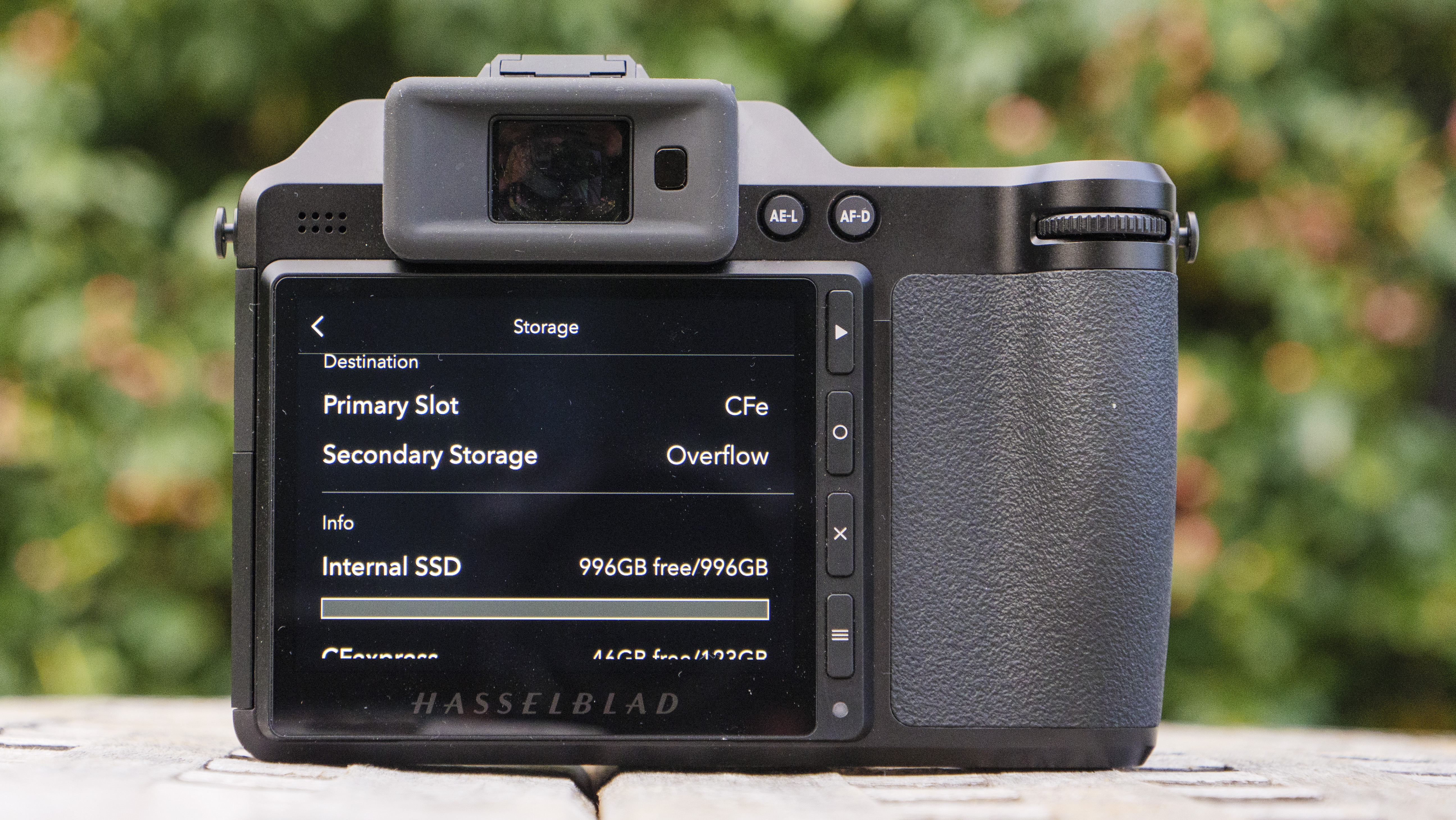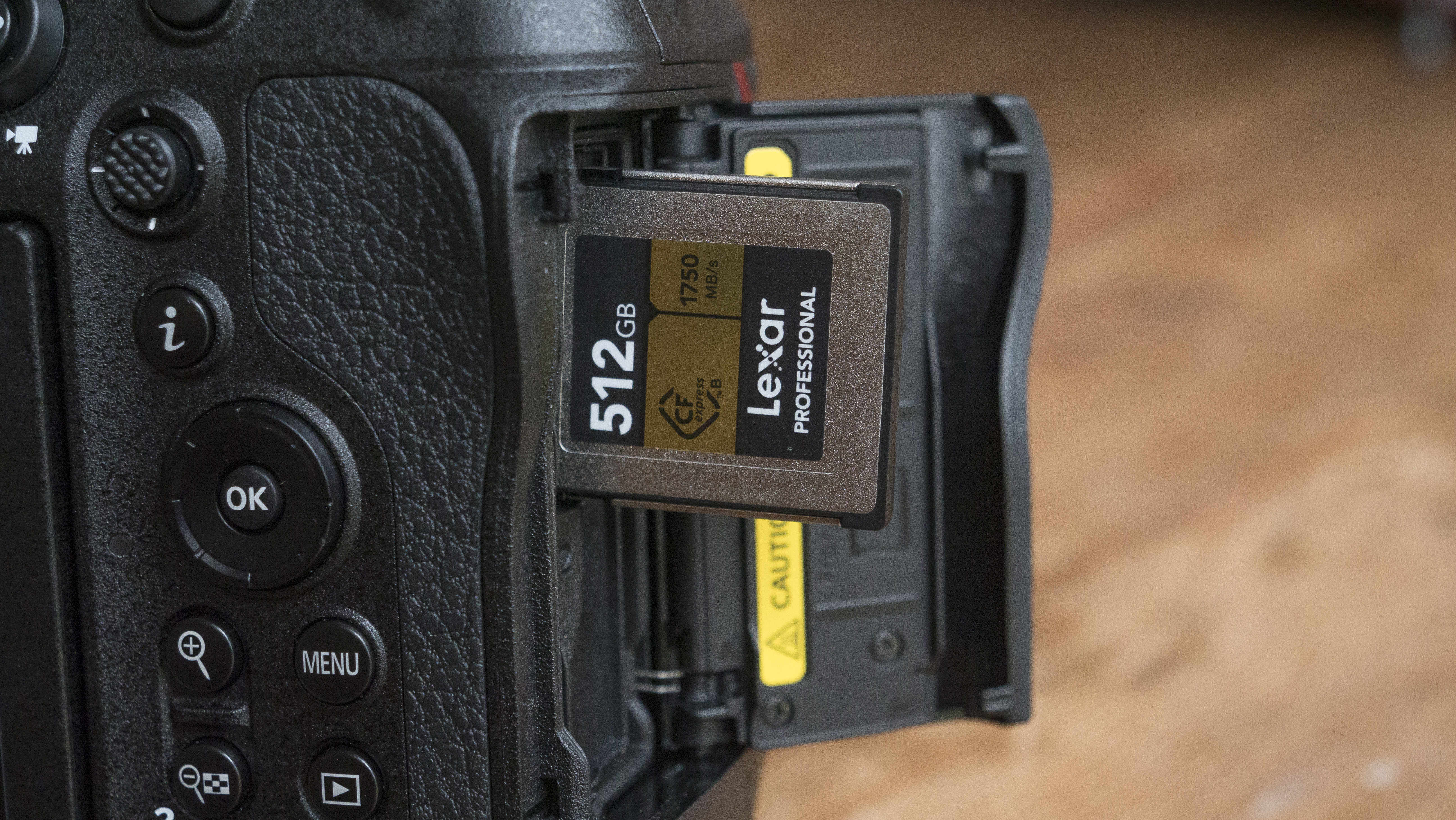It's high time mirrorless cameras had built-in memory as standard – and after another photography disaster, this is personal

I was gazing out of our south-facing kitchen window the other day. We’ve got a bird feeder in view, hung in an adjacent fig tree that basks in the sun, and a bird I rarely see was perched on one of the branches, eyeing up the feeder.
Naturally I sprinted to get my mirrorless camera and grab a few snaps. I didn’t have time to fiddle with camera settings in case I missed the feathered visitor, and for the following minute or two the bird obliged me for this impromptu photoshoot, dancing from branch to branch around the feeder.
I grabbed some great shots – the bird comically yawning was a highlight, all my images were nicely backlit by the morning sun. At least, I thought I'd got some great shots. The bird eventually flew off, and I eagerly hit the play button to find that yawning photo.
Oops – there was no memory card in the camera.
The leading camera brands are holding back
I’m know I’m not the only photographer to experience such heart-sinking moments; and maybe it's just me, but they also seem to happen at the worst possible times, causing bigger disasters than a few lost snaps taken from the comfort of my kitchen. A forgotten card on a long trip. A full memory card just a short while into a shoot.
It’s part photographer error of course. We should remember to do the basic checks: battery charged, memory card inserted, and with enough capacity. But there are times, like the aforementioned scenario, when there's no time to do those checks, or they're forgotten. That said, here I am using a camera that cost me north of $2,000 / £2,000 / $AU3,500 body-only, and it doesn’t even have built-in memory like my phone does. What’s up with that?

I do have another camera with built-in memory – one of the best compact cameras around, the Ricoh GR III X, which offers a modest 2GB. The Hasselblad X2D 100C is another of my favorite mirrorless cameras, and it has a massive 1TB of internal storage and a card slot, while some digital Leica models do too.
It's perfectly possible to include built-in memory in a camera, but none of the mainstream camera brands do it. Come on Sony, Nikon, Canon, Fujifilm, Panasonic and others – it’s high time your cameras came with built-in memory as standard.
Sign up for breaking news, reviews, opinion, top tech deals, and more.
Getting things right in-camera
Since that missed moment the other day, I’ve got smart. As George Bernard Shaw said, only fools repeat the same things over and over, expecting to obtain different results, and I’ve finally gotten around to customizing my camera so that it wont take pictures if there’s no memory card inserted.
Most enthusiast and pro mirrorless cameras I’ve used have the option to lock the shutter when there’s no card inserted. The method varies between models, but with the Nikon Z6 II the option is found deep within the setup menu, and you simply choose your preference with a single press. Locking the shutter also prompts a flashing no card symbol in the EVF / LCD display, just in case the zero feedback from pressing the shutter wasn’t indication enough.

Adjusting that setting will ensure that you avoid scenario like the one I described. However, employing such a failsafe in-camera is no good if you discover while on location that you've forgotten your memory cards altogether. Even with that lock shutter fail safe in place, my request to camera makers – and I clear my throat – is please add built-in memory to your cameras as standard!
Why not?
There are reasons why the leading brands don’t include built-in memory in popular models. No good reasons, but reasons. Cost would be up there for sure. Built-in high-performance memory isn’t cheap, and brands would struggle to include internal memory in cameras below $1,000 / £1,000 / AU$1,500 without it necessitating a significant price hike. Adding built-in memory is entirely possible though for pro cameras above the $2,000 / £,2000 / AU$3,500 mark.
Could it also be because of limitations in terms of memory speed? I don’t think so. Top-quality solid-state drives are just as fast as the best removable memory. And frankly I’d happily have cheap and slow internal memory as a failsafe, as in my own Ricoh GR III X, and combine that with high-speed removable memory. After all, virtually all the cameras I’ve used that have built-in memory also accept memory cards, like the super-slim medium-format beauty that is the Hasselblad X2D 100C.

There’s also the small risk of built-in memory corruption. In such a case, your only real option would be to send the camera back for repair, and that’s a lot more hassle than a memory card that you can reformat or simply throw away if it's not repairable. Again though, cameras can have both built-in and removable memory.
As a consumer I wouldn’t mind paying extra for a camera that features built-in memory. Yes, I already own memory cards that I can reuse for most cameras, but a lot of people need to fork out for memory cards when buying a new camera anyway.
I think I’ve made my case clearly enough, so all that’s left for me to say to Sony, Canon and others – and third time's a charm – is: it’s high time your cameras came with built-in memory as standard!
You might also like

Tim is the Cameras editor at TechRadar. He has enjoyed more than 15 years in the photo video industry with most of those in the world of tech journalism. During his time as Deputy Technical Editor with Amateur Photographer, as a freelancer and consequently editor at Tech Radar, Tim has developed a deeply technical knowledge and practical experience with cameras, educating others through news, reviews and features. He’s also worked in video production for Studio 44 with clients including Canon, and volunteers his spare time to consult a non-profit, diverse stories team based in Nairobi. Tim is curious, a keen creative, avid footballer and runner, and moderate flat white drinker who has lived in Kenya and believes we have much to enjoy and learn from each other.